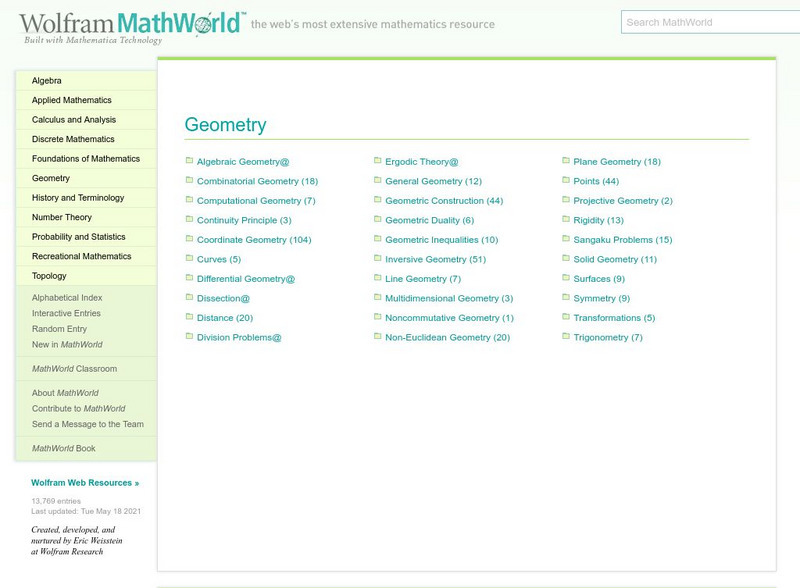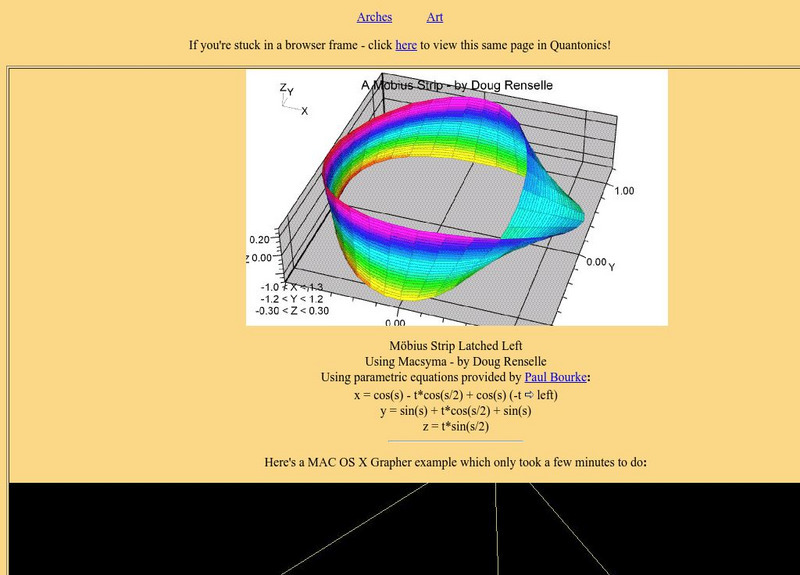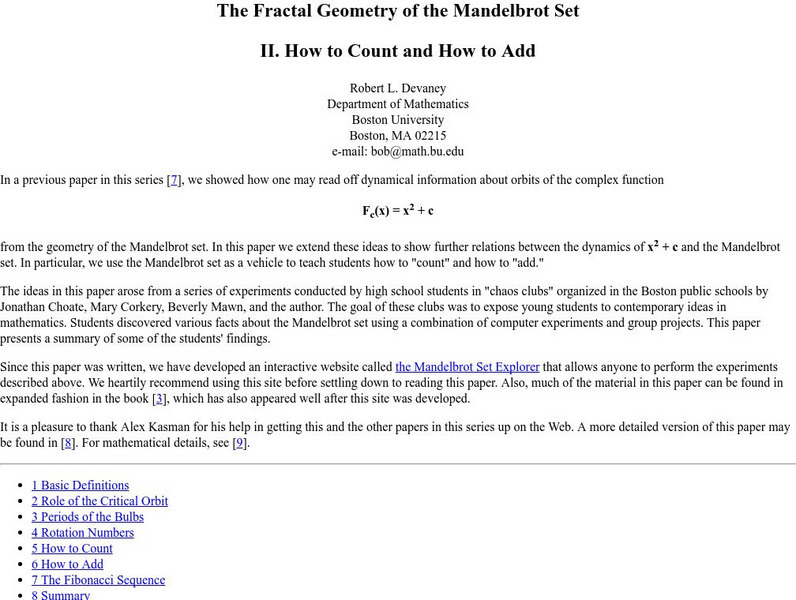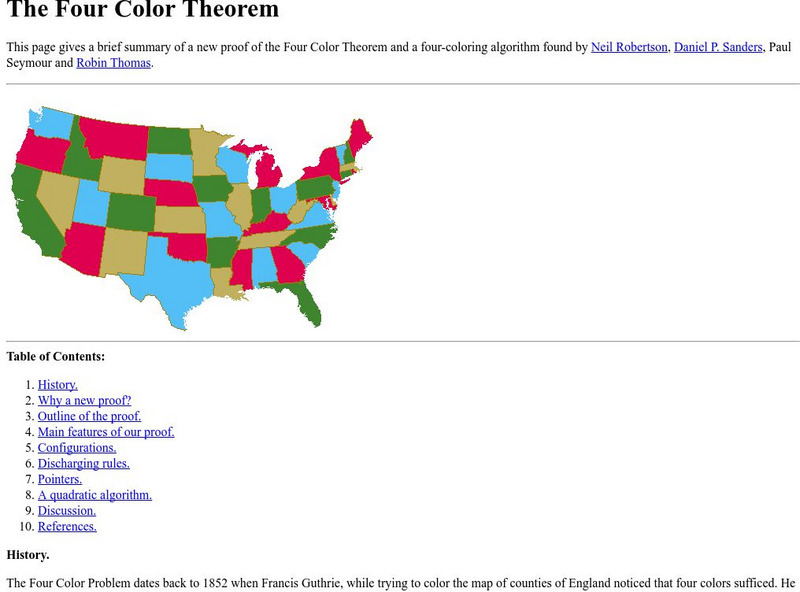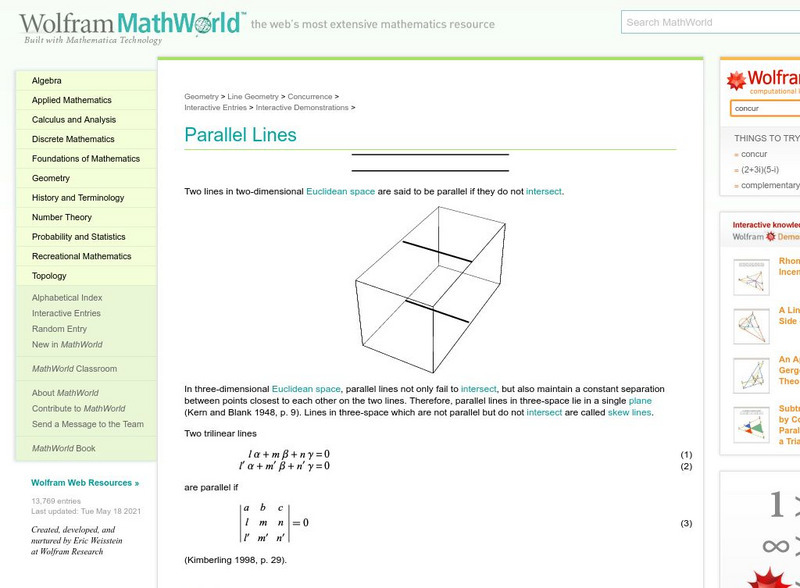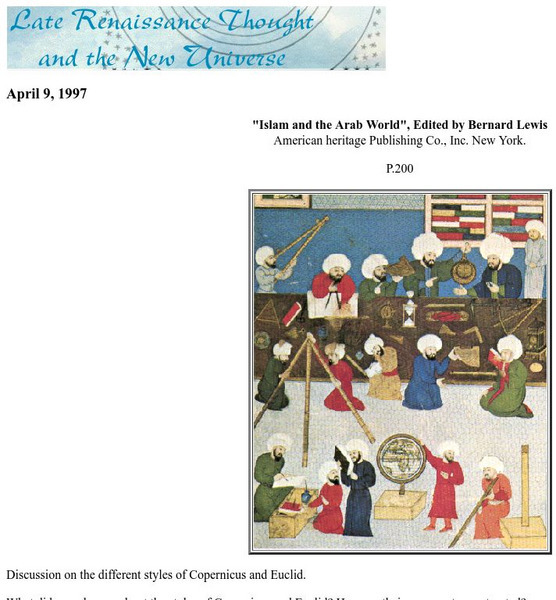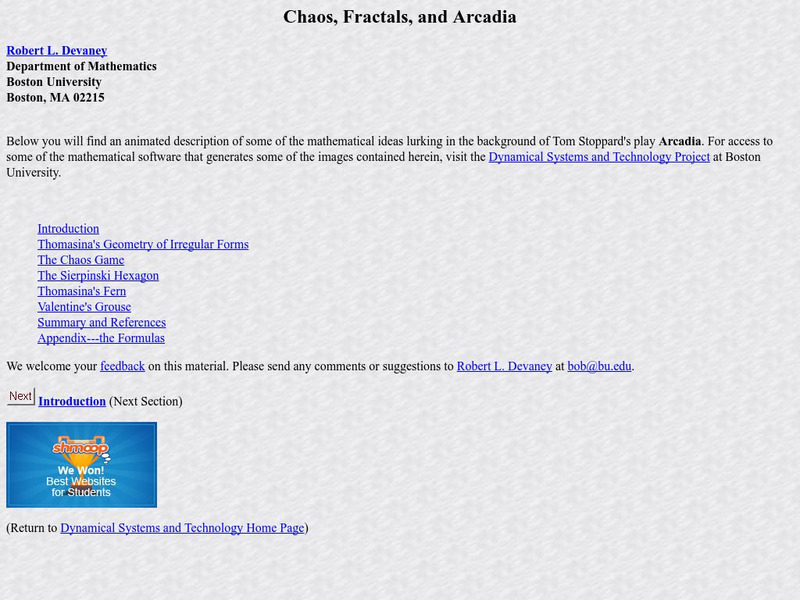University of St. Andrews (UK)
University of St. Andrews: Non Euclidean Geometry
The University of St. Andrews in Scotland provides an excellent site explaining Non-Euclidean geometry.
Cuemath
Cuemath: Euclidean Geometry
Explore the world of Euclidean geometry by understanding euclidean and non-euclidean geometry, the postulates and axioms, and how to apply them while solving problems. Check-out the solved examples for better understanding and try your...
Mathigon
Mathigon: Geometry: Euclidean Geometry: Definitions
This lesson focuses on Euclidean Geometry terminology; such as line, point, line segment, congruence, circle, radius, ray, and more. It defines each term and provides an example of each.
Oswego City School District
Regents Exam Prep Center: Lines and Planes
Use these resources in preparing instruction on undefined terms (points, lines, and planes), theorems relating lines and planes, and Euclidean and non-Euclidean geometry. You'll find three lessons on the aforementioned subject areas, an...
Mathigon
Mathigon: Euclidean Geometry: Geometric Construction
This lesson focuses on the history of geometric construction beginning with Euclid's Axioms to the simple tools such as the straight edge and the compass.
Mathigon
Mathigon: Euclidean Geometry: Euclid's Axioms
This lesson focuses on Euclid's Axioms, simple, intuitive statements, that everyone agrees are true. An axiom(or postulate) is a mathematical statement that is regarded as "self-evident" and accepted without proof. A key part of...
Mathigon
Mathigon: Euclidean Geometry: Introduction
Mathematicians in ancient Greece were amazed by mathematical patterns, and wanted to explore and explain them. They began to study mathematics just "for fun" without a specific application in mind. One of these mathematicians, Thales of...
Wolfram Research
Wolfram Mathworld: Elliptic Geometry
MathWorld offers a brief definition of elliptic geometry and including a brief discussion of its relationship to Euclidean geometry, with links to other related definitions.
Wolfram Research
Wolfram Math World: Geometry
This MathWorld tutorial provides detailed overviews of the concepts and theorems associated with geometry. Most of the Math World sites are extensive and some require higher math knowledge to understand, links to terms and topics are...
Shodor Education Foundation
Shodor Interactivate: Lesson: The Mandelbrot Set
In this instructional activity students will explore Julia sets and the Mandelbrot set. In the process they will learn about fractals and explore complex numbers and function iteration.
University of Massachusetts
Fractal Project: Exploring Fractals
A good beginner's site for fractals - the language is straightforward and requires only minimal experience to be able to understand the topic. (Note: When clicking on links on archived site, they may pause and appear not to be found...
Alabama Learning Exchange
Alex: Platonic Solids Ornaments
This is a hands-on activity that introduces students to the five Platonic solids. Students will discover the special relationship between faces, vertices, and edges. Students will research the Platonic solids and then construct and...
Boston University
Fractal Geometry of the Mandelbrot Set Ii
This web site addresses counting and adding in fractal operations, as well as the role of the Fibonacci sequence in fractal geometry.
Wikimedia
Wikipedia: Hyperbolic Geometry
This encyclopedia entry from Wikipedia offers a discussion on hyperbolic geometry. The site explains how the hyperbolic geometry plane is represented in two dimensions and how lines in the plane must be drawn. Other types of models for...
Jim Loy
Jimloy.com: Saccheri
This site explains the Saccheri quadrilateral and the importance of his work in geometry.
Other
Georgia Tech: The Four Color Theorem
An explanation and proof of the Four Color Map Theorem. Includes illustrative images and a plethora of information.
National Council of Teachers of Mathematics
The Math Forum: Ask Dr. Math: Hyperbolic Geometry
Dr. Math, responds to a question fro a nineth grade stduent who wants to understand hyperbolic geometry. The Dr. uses descriptive analogies in attempts to unravel why triangles in hyperbolic geometry have less than 180 degrees in them.
University of St. Andrews (UK)
University of St. Andrews: St. Andrews: History of the Four Color Theorem
The University of St. Andrews offers a brief history of the first math problem to be solved with computers.
Wolfram Research
Wolfram Math World: Parallel Lines
A definition for parallel lines in two-dimensional and three-dimensional Euclidean space. The site also gives reference to skew lines and explains the difference between skew and parallel lines in three-dimensional space.
Dartmouth College
Dartmouth College: The Different Styles of Euclid and Copernicus
A history of the differences between Euclid's and Copernicus's methods of proving geometric ideas.
University of Canterbury
Canterbury: The Konigsberg Bridge Problem
An introduction to the Konigsberg Bridge problem and its relationship to network theory.
Wolfram Research
Wolfram Math World: Spherical Geometry
Site provides a brief explanation of the discipline of Spherical Geometry along with many links to spherical geometry topics.
Boston University
Boston University: Chaos, Fractals and Arcadia
This is an interesting site for information on chaos and fractals. Includes links to interactive activities to learn more.




